
A caregiver daily checklist template is an essential tool for anyone providing care to a loved one. It takes the guesswork out of everyday caregiving tasks by giving caregivers a framework for their day and ensuring that nothing important is left undone. This type of template typically includes the basic tasks that need to be completed like meal preparation and medications, as well as more advanced duties like housekeeping, medical-related trips, and leisure activities.
Table of Contents
With an organized plan of action in place, caregivers can more easily manage their responsibilities, leaving them feeling better equipped to take on any additional challenges that might arise. By utilizing a nightly checklist template, people who provide care can ensure they’re spending enough time focusing on their own lives while simultaneously providing the best possible service to those who depend on them.


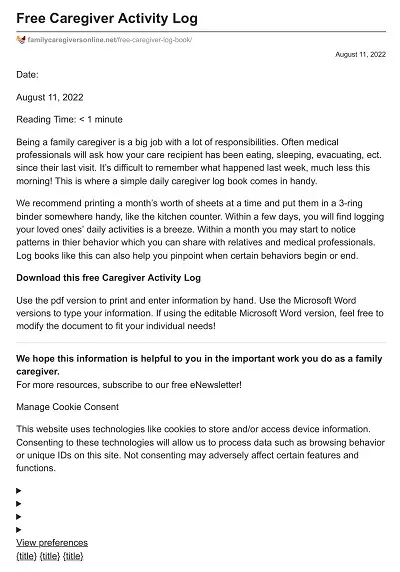

Caregiving is an incredibly important occupation, one that is often both challenging and rewarding at the same time. For many caregivers, having a daily checklist can be of great benefit to help them stay organized and on top of all their duties. A daily checklist provides structure when looking after a loved one while helping ensure they receive the best quality care possible.
Not only will it help to make sure all essential tasks are taken care of each day, but it also allows caregivers to document updates and changes so they can deliver informed and consistent care over the long term. Keeping a comprehensive daily caregiver checklist shows that you’re dedicated to providing your loved one with the dignified, compassionate support they need and deserve.
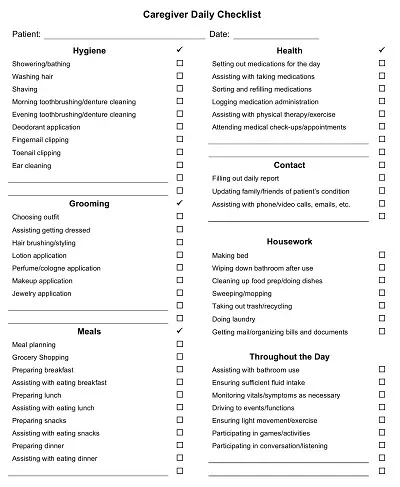

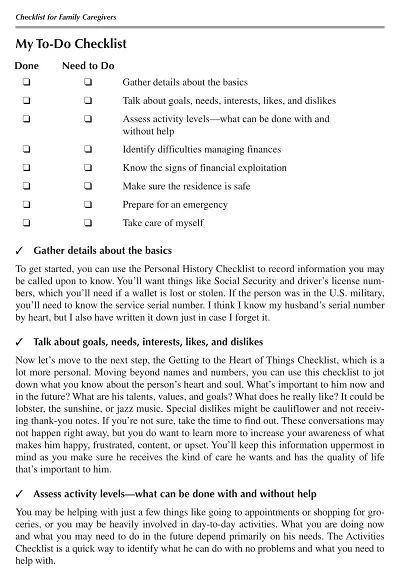


Caring for a loved one is difficult to work, but we are willing to do whatever it takes to make sure that their needs and safety are taken care of. When it comes to managing their daily activities, a caregiver’s daily checklist can help ensure the job gets done efficiently and promptly. Checklists help us keep track of medications, appointments, meals, hygiene tasks, and any other important routine activities for our loved ones.
With a daily list of objectives in place and tasks broken down into manageable sections, caregivers can unleash the power of planning to reduce stress levels while keeping on top of short-term goals. Utilizing good organizational skills through checklists will also help caregivers save time by eliminating the need to constantly search for items or remember instructions.

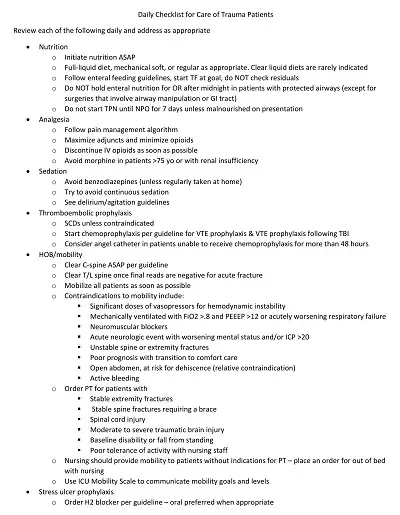

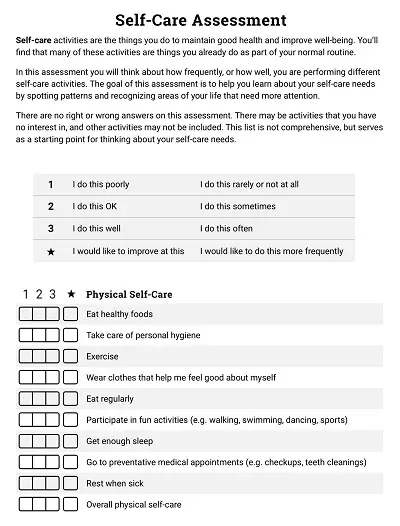

To ensure that your caregiver is providing the best possible care for your loved one, using a daily checklist can be an effective way of monitoring their behavior. A comprehensive checklist should incorporate check-ins regarding all routine activities, from meal preparation and hygiene to mood changes or new pain symptoms.
Have your caregiver fill out the form before leaving each day so you can stay current with any changes in your loved one’s well-being. Doing regular reviews of the forms after a few days or weeks will help identify patterns in behavior or any inconsistencies which may need to be addressed. Utilizing a caregiver daily checklist means added peace of mind for both you and your family members.





Being a caregiver of any kind is an incredibly demanding job. It can feel overwhelming to keep track of all the tasks you have to do each day, and it can be easy to forget something important. To help make your life as a caregiver easier and less stressful, consider creating a daily checklist template. This way, you will have a clear outline of what needs to be done without having to start from scratch each day.
The first step in creating your checklist template is gathering the necessary information about the person for whom you are caring. This includes their medical history, medications they may be taking, food allergies, dietary restrictions, and other pertinent details. Having these facts easily accessible will make it easier for you to provide care as needed.
Once you have gathered all relevant information about the person for whom you are caring, it’s time to decide which tasks need to be completed daily. These could include administering medications and vitamins, preparing meals (or making sure they are prepared), helping with hygiene needs, providing transportation to doctor’s appointments or errands, monitoring their health and wellbeing, etc. Make sure that your list is comprehensive so that nothing falls through the cracks.
Now that you know what needs to be done daily for your care recipient, it’s time to create your template. You can choose from several different formats such as Excel spreadsheets or Word documents depending on your preference. Make sure that there are sections for “To-Do” items as well as “Completed” items so that you can easily track progress throughout the day. Additionally, if there are any recurring tasks (such as administering medication every 8 hours) consider adding those into their section for quick reference. Finally, add in any notes or reminders about specific tasks or items that may come up during the day so that everything is laid out in one place.